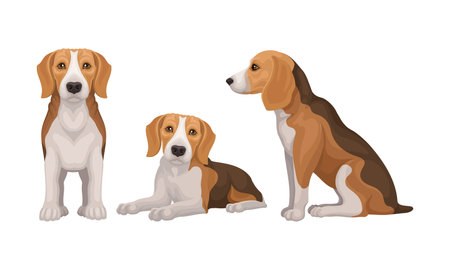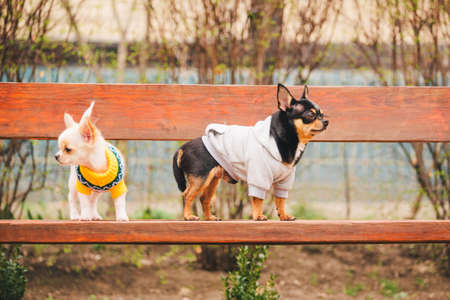1. Understanding Positive Reinforcement Training
Positive reinforcement training is a method that focuses on rewarding your dog for good behavior rather than punishing unwanted actions. This approach helps strengthen the bond between you and your pet while making learning enjoyable and stress-free.
How Does Positive Reinforcement Work?
The concept is simple: when your dog performs a desired behavior, you immediately reward them with something they love, such as treats, praise, or playtime. Over time, your dog associates the behavior with positive outcomes and is more likely to repeat it.
Why Is Positive Reinforcement Effective?
This training method works because dogs are naturally motivated by rewards. Instead of feeling fear or anxiety, they learn in a positive environment, which encourages faster learning and long-term retention of behaviors.
Key Benefits of Positive Reinforcement Training
| Benefit | Description |
|---|---|
| Builds Trust | Your dog learns to associate you with positive experiences, strengthening your bond. |
| Encourages Good Behavior | Dogs are more likely to repeat behaviors that earn them rewards. |
| Reduces Stress | This method avoids fear-based techniques, making training enjoyable for your dog. |
| Works for All Dogs | No matter the age or breed, positive reinforcement can help train any dog effectively. |
Examples of Rewards You Can Use
- Treats (small, healthy snacks)
- Praise (verbal affirmations like “Good job!”)
- Toys (favorite chew toys or fetch balls)
- Playtime (a quick game of tug-of-war or fetch)
- Affection (belly rubs or gentle petting)
The key to success with positive reinforcement training is consistency. By rewarding good behavior immediately and consistently, your dog will quickly understand what is expected and be eager to learn more.
2. Choosing the Right Rewards
When it comes to positive reinforcement training, choosing the right rewards is key to motivating your dog. Every dog is different, so its important to find what excites and encourages your furry friend the most. Rewards can include treats, praise, playtime, and even access to favorite activities. Let’s explore different types of rewards and how to choose the best one for your dog.
Types of Rewards for Positive Reinforcement
Treats
Treats are one of the most effective ways to reinforce good behavior. However, not all treats are created equal. Some dogs prefer soft and chewy treats, while others enjoy crunchy ones. High-value treats like small pieces of chicken or cheese can be especially useful for training in distracting environments.
Praise
Some dogs thrive on verbal praise and affection. Using a happy tone and saying phrases like “Good job!” or “Well done!” can make a big difference. Pairing praise with petting or a belly rub can further reinforce positive behavior.
Playtime
If your dog loves toys or games, using play as a reward can be very effective. A quick game of fetch, tug-of-war, or chasing a favorite toy can serve as an exciting incentive for good behavior.
Access to Favorite Activities
Sometimes, the best reward is allowing your dog to do something they love. This could mean letting them sniff around on a walk after following a command or giving them permission to greet a friend after sitting politely.
Selecting the Best Motivator for Your Dog
Since every dog has unique preferences, its essential to observe what excites them the most. Below is a simple guide to help you determine which rewards might work best for your dog:
| Dogs Personality | Best Reward Type |
|---|---|
| Food-motivated | Treats (high-value snacks) |
| Loves attention | Praise and petting |
| Energetic and playful | Toy rewards and playtime |
| Eager to explore | Access to walks or new environments |
The key is experimentation—try different rewards and see what works best for your pup. By using the right motivators, youll make training more engaging and enjoyable for both you and your dog.

3. Timing and Consistency in Rewarding
When training your dog using positive reinforcement, two key factors play a crucial role in success: timing and consistency. Rewarding your dog at the right moment helps them associate the treat or praise with the desired behavior, while consistency ensures they understand what is expected of them.
Why Timing Matters
Dogs live in the moment, so its essential to reward them immediately after they perform the desired behavior. If there is a delay, they may not make the connection between their action and the reward.
Examples of Proper Timing
| Behavior | Correct Timing | Incorrect Timing |
|---|---|---|
| Sitting on command | Give a treat as soon as their bottom touches the ground. | Waiting too long or giving a treat when they stand back up. |
| Coming when called | Praise and reward immediately when they reach you. | Giving a treat minutes later after theyve done something else. |
| No jumping on guests | Treat them when they stay calm instead of jumping. | Praising them after they already jumped. |
The Importance of Consistency
If you only reward good behavior sometimes, your dog may become confused about what is expected. Consistently reinforcing positive actions helps your dog learn faster and prevents unwanted behaviors from forming.
Tips for Staying Consistent
- Use the same rewards: Stick to treats, toys, or praise that your dog enjoys to reinforce good behavior effectively.
- Avoid mixed signals: Ensure all family members follow the same rules and reward system to prevent confusion.
- Be patient: Training takes time, so consistently rewarding good behavior will help solidify their learning.
- Create a routine: Practice at the same times each day to establish habits more easily.
The Connection Between Timing and Consistency
The combination of rewarding at the right moment and maintaining consistency creates a strong foundation for effective training. By always reinforcing good behavior promptly and predictably, your dog will quickly understand what you expect from them and respond positively.
4. Common Mistakes to Avoid
Positive reinforcement training is an effective way to encourage good behavior in your dog, but it’s easy to make mistakes that can slow progress or create unintended habits. Here are some common pitfalls and how to fix them.
Over-Reliance on Treats
Treats are a great motivator, but relying too much on them can lead to a dog that only listens when food is involved. To avoid this:
- Gradually replace treats with verbal praise, petting, or playtime.
- Use a variable reward schedule—sometimes giving treats, sometimes using other rewards.
- Ensure your dog responds to commands even when no treat is visible.
Accidentally Reinforcing Bad Behavior
Dogs learn from what gets rewarded. If you unintentionally give attention or treats when your dog misbehaves, they may repeat the unwanted behavior. Some examples include:
| Mistake | How It Happens | How to Fix It |
|---|---|---|
| Rewarding jumping | You pet or talk to your dog when they jump on you. | Ignore jumping and reward calm greetings instead. |
| Barking for attention | You give treats or affection to quiet a barking dog. | Wait until they stop barking before giving attention. |
| Poor leash behavior | You let your dog pull towards something they want. | Stop walking when they pull and move forward only when the leash is loose. |
Inconsistency in Training
If everyone in the household uses different commands or rewards bad behavior at times, your dog will get confused. To stay consistent:
- Make sure all family members use the same commands and rules.
- Avoid rewarding bad behavior, even if it seems harmless or cute at the moment.
- Practice regularly so your dog stays familiar with the expectations.
Lack of Patience
Training takes time, and expecting quick results can lead to frustration. Dogs learn at different paces, so be patient and celebrate small wins along the way.
5. Building a Strong Bond Through Training
Positive reinforcement training is more than just teaching your dog good behavior—its also a powerful way to strengthen the bond between you and your furry companion. When you use rewards like treats, praise, or playtime, your dog learns to associate training with positive experiences, making them more eager to listen and engage with you.
How Positive Reinforcement Strengthens Your Relationship
By consistently rewarding desired behaviors, youre creating an environment of trust and mutual understanding. Instead of fearing punishment, your dog will look forward to training sessions as fun and rewarding moments spent with their favorite person—you!
Ways to Use Positive Reinforcement for a Stronger Connection
| Method | How It Helps Strengthen Your Bond |
|---|---|
| Treat Rewards | Your dog associates you with something enjoyable, increasing trust and motivation. |
| Praise & Affection | A warm “Good job!” or belly rub reinforces positive behavior while deepening your connection. |
| Playtime as a Reward | Engaging in play strengthens the emotional connection between you and your dog. |
| Training Sessions as Quality Time | Your dog sees training as a special bonding activity rather than just an obedience exercise. |
The Importance of Consistency and Patience
The key to effective positive reinforcement training is consistency. Repeating the same cues, rewards, and encouragement helps your dog understand what is expected of them. Patience is also crucial—some dogs learn faster than others, so taking the time to reinforce behaviors in a calm and positive manner will lead to long-lasting results.
A Happier, More Fulfilling Relationship
The more enjoyable and rewarding training is for your dog, the stronger their bond with you will become. Over time, this approach fosters a deep sense of companionship built on trust, love, and mutual respect. By making training a positive experience, youre not just shaping good behavior—youre creating lasting memories with your best friend.


